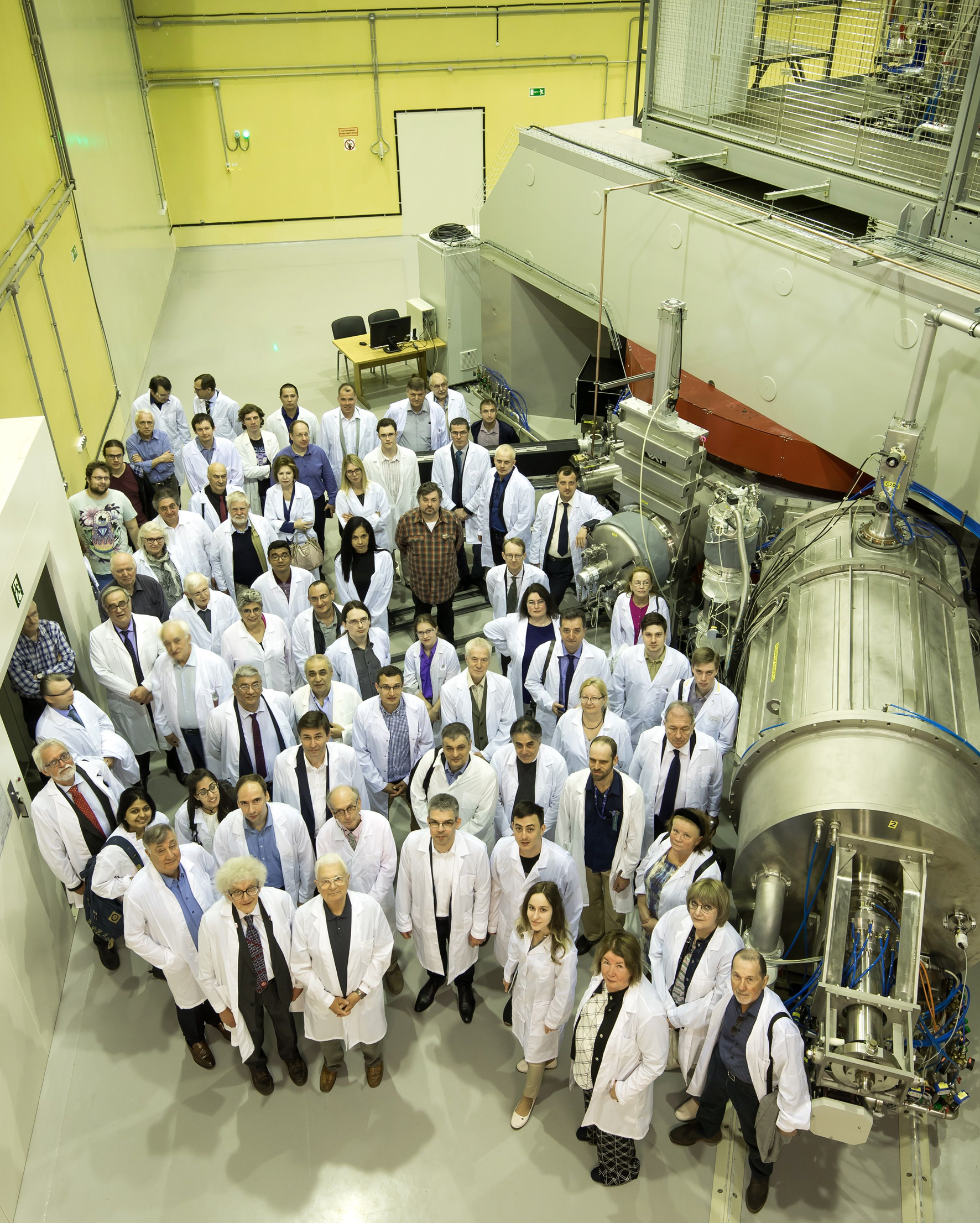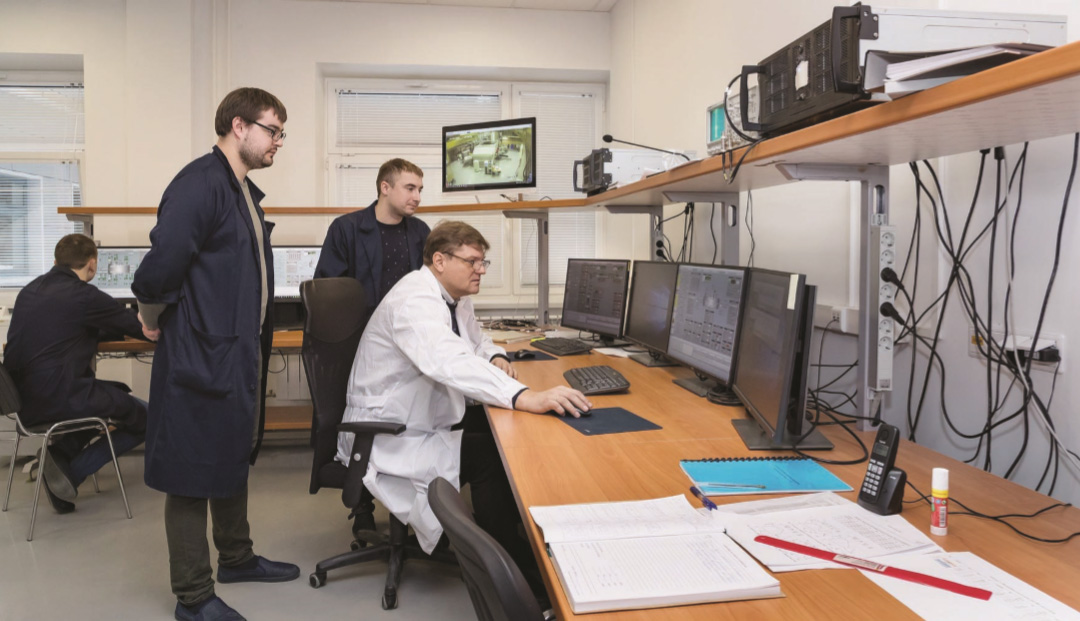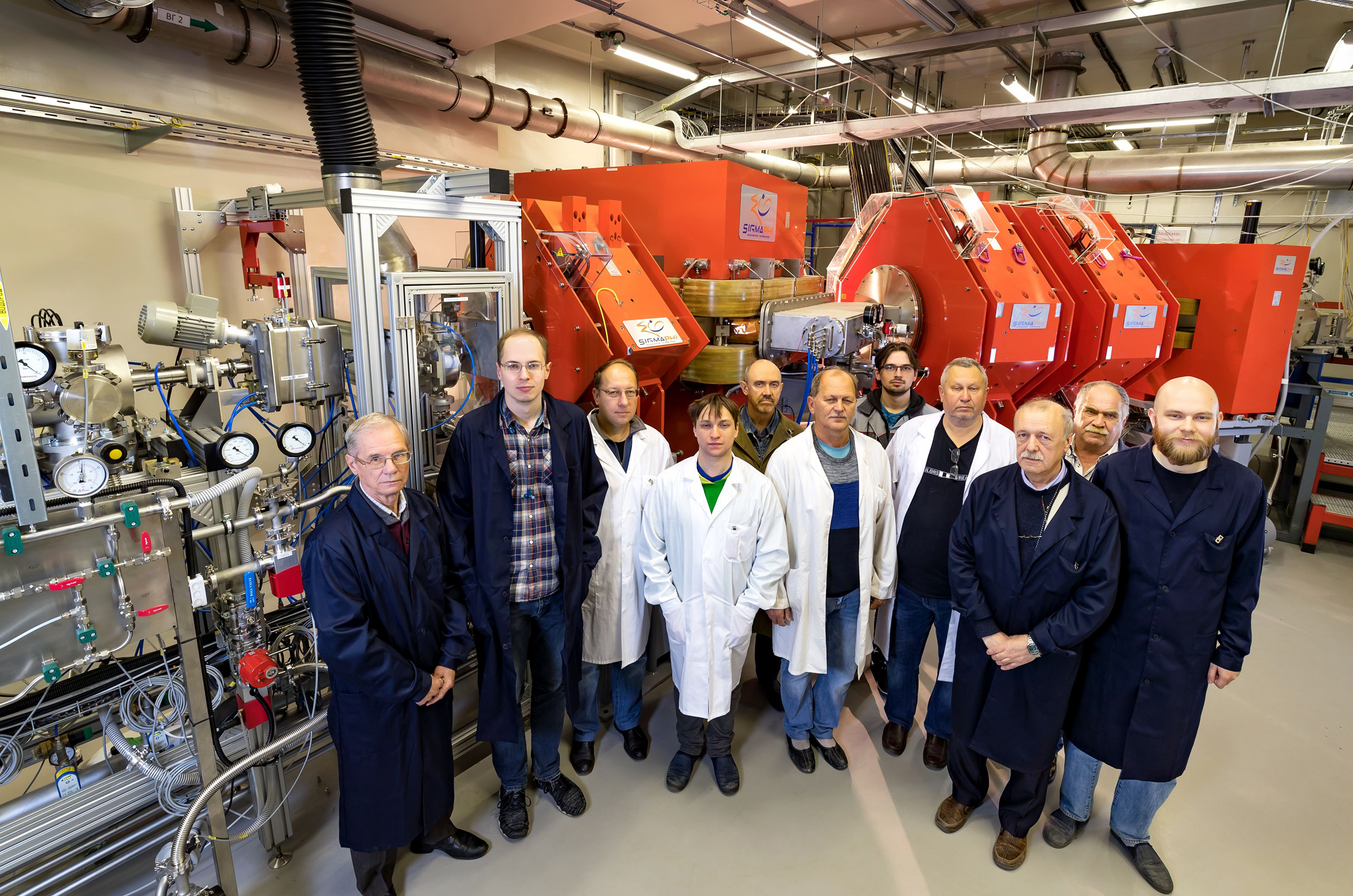Physics. Modernization. Construction… What else?”
Interview, 05 June 2020
This year, at the 127th meeting of the JINR Scientific Council, Doctor of Physics and Mathematics Sergey Ivanovich Sidorchuk was elected as Director of the Flerov Laboratory of Nuclear Reactions. Two months after that, time for work in completely new conditions came for him and his colleagues. We agreed to meet in the Laboratory on Monday, 1 June. I did not meet anyone on my way from the checkpoint to the Laboratory, and all this seemed unusual.
“Sergey Ivanovich, representatives of other laboratories have already given interviews to the JINR Weekly Newspaper. The last two months of unusual for us conditions have shown us who and what can do… Nevertheless, along with some common features, each laboratory has had and still has something special…”
“The peculiarity common for all the laboratories is that the scientific activities have been suspended for about two months at the Institute. After each order continuing this suspension, we expected that soon our isolation would end and expended the lists of those allowed to work at workplaces. Nowadays, we have about 300 such employees. First of all, there are employees supporting the operation of two accelerators and the implementation of obligations to Roscosmos. Of course, it does not mean that we do not consider the epidemic seriously. The shift working mode means that there are not more than several dozens of staff members in the Laboratory at the same time. Everyone wears masks, of course, and maintains social distance.
The impact of the quarantine on scientific plans of the Laboratory was great. We planned to hold the first full-scale experiment at the Superheavy Element Factory this spring on the synthesis of element 115, moscovium, in the reaction 48Са+243Am. It is obvious that we had to stop the experiment and postpone it until better times. Better days are expected to come in the upcoming weeks. So, we support the vacuum in the DC-280 accelerator and we will be able to get an intensive beam of calcium and return to work in the shortest possible time. We managed to carry out a large volume of test measurements at the gas-filled separator GNS-2 installed at the Superheavy Element Factory and we use the break to make important changes in the operation of the facility. These changes are primarily related to the enormous current of accelerated ions provided by the DC-280 accelerator. If beams with the intensity of about 1 p⋅μA are accelerated at the U-400 cyclotron, at which all the synthesis experiments have been conducted, then the current at the DC-280 accelerator must be an order higher. It is a significant difference given that the beam interacts with delicate structures on its way. For example, the window separating the vacuum volume from the gas-filled one quickly burns out at intensities of more than 2 p · μA. Now, we are facing a challenge of replacing this window with a differential pumping system that will ensure a pressure gradient at the border between the vacuum and the separator filled with gas.
Even such seemingly simple constructions as the calorimeter demand special approach at high intensities. We will possibly have to look for an opportunity to use the technologies developed for the thermal protection of the Soviet Shuttle “Buran”.
Before the stop, the DC-280 group consisting of very young but talented and energetic people managed to get and support the intensity of about 5 p · μA at the DC-280. It is necessary to move on to achieve the maximum possible intensities. But this will happen gradually since this work needs solving problems arising in the process.”
“It seems like the coronavirus situation didn’t catch you unawares and even helped you in some way…”
“I do not have a feeling of gratitude to the virus for what and how is happening now. But we may say that we are using this break successfully and correctly. I hope that we will shortly return to our major experiments.
As for other FLNR accelerators, they have been working or are starting to operate now. On 2 June, the radiation runs for Roscosmos at the U-400 cyclotron will end, and on 3 June, the U-400M cyclotron will be launched, and work in the frames of the contract with the state corporation will be continued at this accelerator.
We also expect that we will be able to continue the implementation of our experimental programme at U-400 in June. According to the schedule, experiments at the facilities “CORSET” and “MAVR” will be conducted, and then, at the beginning of June, all the accelerators will stop for annual technological maintenance.
Unfortunately, some experiments will no longer be conducted. An experiment at the ACCULINNA-2 fragment separator of U-400M was planned for June with the use of the optical time projection chamber developed by our Polish colleagues from the University of Warsaw. But nature was stronger than our calculations. The Polish group will not come as far as business trips are banned in Poland until the end of June. This part of the programme will remain unfulfilled, and we will look for opportunities to hold this experiment in the autumn or next year.”
“The Weekly Newspaper has recently written about this group. There are lots of young people working here.”
“Yes, there are. A lot of young scientists take part in this experiment. There are young people from FLNR as well as students and postgraduates from the University of Warsaw.
If we consider our losses, we cannot but say that the experiment on spectroscopy of daughter products of moscovium, element 115, at the SHELS-GABRIELA facility stopped in April. Experiments on spectroscopy of heavy nuclei in FLNR traditionally attract many physicists from different countries. Including our French colleagues who have contributed much efforts and sources to this research, as well as colleagues from Romania, Slovakia, Bulgaria, and South Africa. It is a shame that we had to stop but I hope that we will make another attempt in the autumn.
 The DC-280 cyclotron has become a landmark of the Laboratory of Nuclear Reactions. At the end of 2019 declared the Year of the Periodic Table, participants of the International Symposium “The present and the future of the Periodic Table of Chemical Elements” visited the experimental hall of the cyclotron
The DC-280 cyclotron has become a landmark of the Laboratory of Nuclear Reactions. At the end of 2019 declared the Year of the Periodic Table, participants of the International Symposium “The present and the future of the Periodic Table of Chemical Elements” visited the experimental hall of the cyclotron
At the beginning of July, upgrade of the U-400M accelerator will start in the Laboratory. It is necessary to replace the main coil of the cyclotron, completely change the vacuum system, the control system, to update the radiation control system. It is planned to finish this work in 1,5-2 years. When U-400M is modernized, the U-400 cyclotron will be stopped for reconstruction until 2024. As a result of the reconstruction, we will have, in particular, a wide range of accelerated nuclei with smoothly varying beam energy. In addition to the reconstruction of the accelerator, a new building will be constructed. This will allow us to considerably expand the area for conducting experiments and improve working conditions. Preparatory work in the frames of the reconstruction has started. Of course, not yesterday. It did not stop in April and May 2020 as well.
The Laboratory continues work on the creation of the cryogenic tritium target for the ACCULINNA-2 facility. Our colleagues from Sarov play the main role in this activity. They design and will produce the tritium support system. We expect that the system will be ready for use in experiments right at the moment when the upgrade of U-400M is completed.
In the upcoming weeks, we expect delivery of a new gas-filled separator, GNS-3, from France. It will be assembled and launched at the Superheavy Element Factory. This separator is designed for the study of chemical properties of heavy elements. Moreover, we are going to use it for precision measurements of masses of superheavy elements. It is an extremely important research field that will give absolutely unique information about new nuclei. It should be noted that in the coming years, isotopes of superheavy elements in the amount sufficient for holding such measurements, may be obtained only in Dubna.”
“You have mentioned new construction. Could you tell us more about it? It turns out that the Laboratory has just completed the construction epic and solemnly celebrated the housewarming at the Superheavy Element Factory, and then immediately starts the new one, at the peak of the pandemic…”
“Construction is not the most exciting event but it is, of course, a noble activity. It is a sheer necessity. The scientific plans that already exist or are being created in the Laboratory do not fit the real square and cubic metres of experimental and technical sites. Construction of a new assembling hall continues. The virus could not stop this work. The assembling hall is designed to accommodate arriving equipment. Sites for experimental stands are designed in it at which nodes and elements of new facilities will be assembled and adjusted. We expect that builders will put the hall into operation in September.”
“Physics. Modernization. Construction… What else?”
“We take an active part in competitions. It is an important activity but I would not like to talk about it right now. I do not think that it is appropriate at the moment so I will just give some hints. We engage great intellectual strength in the development of new scientific fields of interdisciplinary nature despite severe restrictive measures. It is surprising that this activity is underway right now, in these challenging conditions, so actively and effectively thanks to the energy of Yu. Ts. Oganessian.”
“The start of your work as the Director of the Laboratory coincided with a rather difficult period…”
“I should say that I do not know whether this period is hard or easy. I have nothing to compare it to. I believe that it was difficult. However, I am sure that there may be harder times as well. The funniest difficulties were of a philological nature. It turned out that I do not know all the words a director should know. These are serious, necessary words. No jokes and hints…
This difficult period was perhaps useful. At least to realize the scale of tasks and their number. I think that young employees do not hurry to defend their theses. I would like the Science and Technology Council of the Laboratory to focus on this problem. There are several groups in the Laboratory engaged in work at beams of the U-400M cyclotron. In connection with the upgrade of the accelerator, they will have a two-year pause. It goes without saying that there will be no time for boredom. Of course, this pause should be used to formulate more global and distant goals than those of the upcoming experiment. In 2021, three themes of the Laboratory will expire, and it is necessary to formulate tasks for new themes and projects now. It is necessary to discuss plans for the next seven-year period that will begin just in three years. These tasks are crucial.”
“What about the scientific calendar? Does it also have cancellations like elsewhere?”
“This year, we planned to hold a regular EXON meeting, the International Symposium on Exotic Nuclei. This significant event in the Laboratory’s life has been postponed to the next year. In addition, the 12th International Conference on Clustering Aspects of Nuclear Structure and Dynamics (CLUSTER’20) has also been rescheduled for the next year. As a result, 2021 will be extremely busy.
Interview conducted by Evgeny Molchanov
Photos by Elena Puzynina


